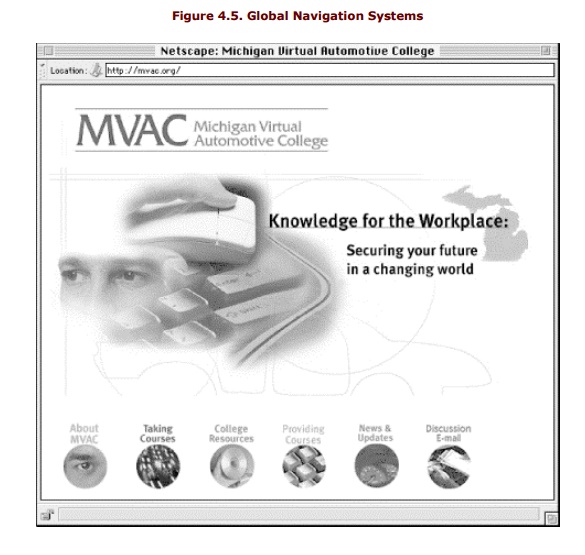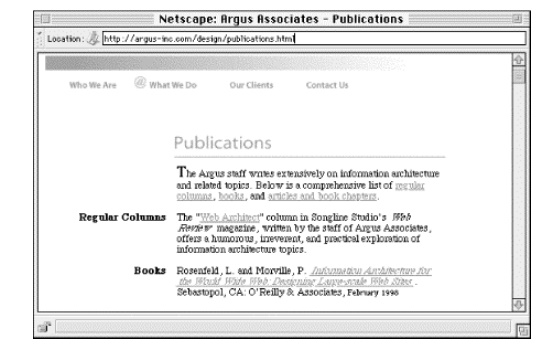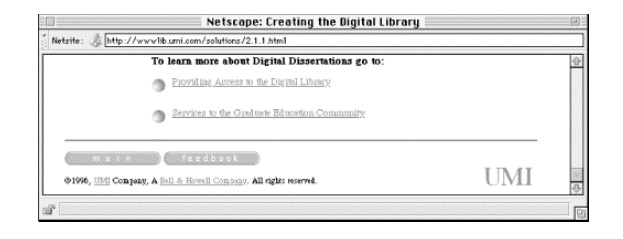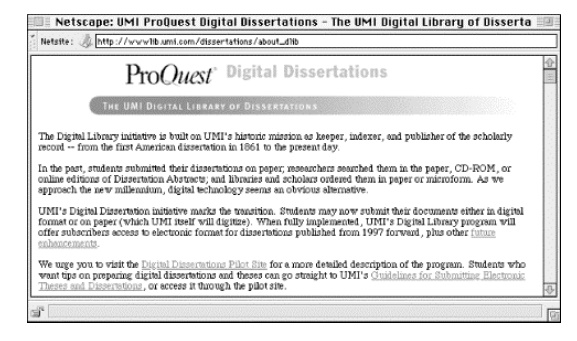Chapter: Information Architecture on the World Wide Web : Designing Navigation Systems
Types of Navigation Systems
Types of Navigation Systems
A complex web site often includes several
types of navigation systems. To design a successful site, it is essential to
understand the types of systems and how they work together to provide
flexibility and context.
1. Hierarchical Navigation Systems
Although we may not typically think of it this
way, the information hierarchy is the primary navigation system. From the main
page to the destination pages that house the actual content, the main options
on each page are taken directly from the hierarchy (see Figure 4.5). As noted earlier, the hierarchy is extremely
important, but also rather limiting. It is these limitations that often require
additional navigation systems.
Figure 4.5. Global Navigation Systems

2. Global Navigation Systems
A global or site-wide navigation system often
complements the information hierarchy by enabling greater vertical and lateral
movement throughout the entire site. At the heart of most global navigation
systems are some standard rules that dictate the implementation of the system
at each level of the site.
The simplest global navigation system might
consist of a graphical navigation bar at the bottom of each page on the site.
On the main page, the bar might be unnecessary, since it would duplicate the
primary options already listed on that page. On second level pages, the bar
might include a link back to the home page and a link to the feedback facility,
as in Figure 4.6.
Figure 4.6. The MVAC Web site employs a very simple,
icon-based global navigation system.

A slightly more complex global navigation
system may provide for area-specific links on third level pages and below. For
example, if a user explores the products area of the web site, the navigation
bar could include Main Page, Products, and Search. The obvious exception to this rule-based system is that
pages should not include navigation
links to themselves. For example, the main page of the products area should not
include a Products link. However,
this is a great opportunity for the site's graphic designer to devise the
navigation bar to show that you are
currently on the main page of the products area. Designers often leverage a
folder tab or button metaphor to accomplish this effect. (On the Argus web
site, we use the @ sign from our corporate logo, as seen in Figure 4.7.)
Figure 4.7. For the Argus web site, graphic designers
from Q LTD came up with a creative and elegant solution to show context within
the navigation system by leveraging the @ sign from our corporate logo. In this
example, the @ sign indicates that the Publications page is within the What We
Do area.

As you can see, this type of rule-based global
navigation system can easily be applied throughout the entire web site. The
navigation system and the graphic design system should be integrated to provide
both flexibility and context. Note that the relative locations of the options
should remain the same from one version of the bar to another and that, since
people read from left to right, Main Page
should be to the left of the other options. Both these factors enhance the
context within the hierarchy.
3. Local Navigation Systems
For a more complex web site, it may be
necessary to complement the global navigation system with one or more local
navigation systems. To understand the need for local navigation systems, it is
necessary to understand the concept of a sub-site.5
The term sub-site was coined by Jakob Nielsen to identify the recurrent
situation in which a collection of web pages within a larger site invite a
common style and shared navigation mechanism unique to those pages.
For example, a software company may provide an
online product catalog as one area in their web site. This product catalog
constitutes a sub-site within the larger web site of the software company.
Within this sub-site area, it makes sense to provide navigation options unique
to the product catalog, such as browsing products by name or format or market.
However, it is also important to extend the
global navigation system throughout the sub-site. Users should still be able to
jump back to the main page or provide feedback. Local navigation systems should
be designed to complement rather than replace the global navigation system (see
Figure 4.8).
Figure 4.8. In this example, the bulleted options are
part of a simple local navigation system that guides users through information
about the Digital Dissertations project. The graphical buttons at the lower
left of the page are part of the global navigation system.

This integration can be challenging,
particularly when the global and local navigation systems provide too many
options. Alone they may each be manageable, but together on one page, the
variety of options may overwhelm the user. In some cases, you may need to
revisit the number of global and local navigation options. In others, the
problem may be minimized through elegant page design.
4. Ad Hoc Navigation
Relationships between content items do not
always fit neatly into the categories of hierarchical, global, and local
navigation. An additional category of ad
hoc links is more editorial than architectural. Typically an editor or
content specialist will determine appropriate places for these types of links
once the content has been placed into the architectural framework of the web
site. In practice, this usually involves representing words or phrases within
sentences or paragraphs (i.e., prose) as embedded hypertext links. This
approach can be problematic if these ad hoc links are important, since
usability testing shows "a strong negative correlation between embedded
links (those surrounded by text) and user success in finding information."
Apparently, users tend to scan pages so quickly that they often miss these less
conspicuous links. You can replace or complement the embedded link approach
with external links that are easier for the user to see.
The approach you use should be determined by
the nature and importance of the ad hoc links. For non-critical links provided
as a point of interest, embedded links can be an elegant, unobtrusive solution.
When using ad hoc links, it's important to
consider whether the linked phrase provides enough context for the user. In Figure 4.9, it's fairly obvious where the Digital
Dissertations Pilot Site link will take you. However, if 1861 or 1997 were
underlined, you would be hard pressed to guess where those links would lead. In
designing navigation systems for the Web, context is king.
Figure 4.9. Moderation is the primary rule of thumb for
guiding the creation of embedded ad hoc links. Used sparingly (as in this
example), they can complement the existing navigation systems by adding one
more degree of flexibility. Used in excess, ad hoc links can add clutter and confusion.

Embedded Links
As you can see, embedded links are surrounded
by text.
Users often miss these links.
One Solution to the Embedded Link Problem is
to give links their own separate lines within the paragraph.
Another solution is to create a separate menu
of ad hoc links at the top or bottom of the page that point to useful related
resources:
•
Embedded
Links
•
Users
•
One
Solution to the Embedded Link Problem
Related Topics